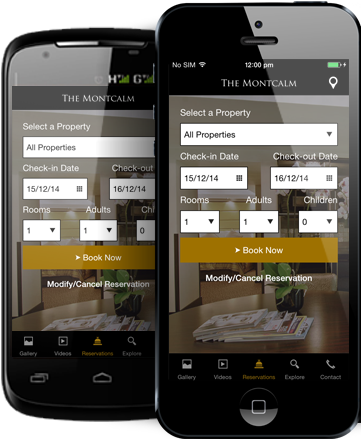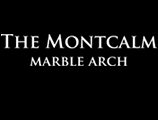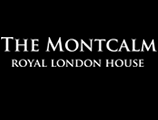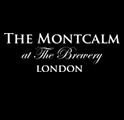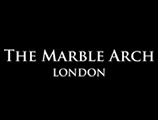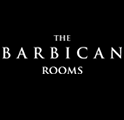London is a city brimming with culture. Through centuries of development and innovation, the English have become world renowned explorers and cultural connoisseurs, with London being the heart of activity. Returning guests of Montcalm West End restaurants and hotels will be all too aware of the wealth of opportunities that a single day in the city can bring, but it can be a little harder for a first time visitor.
For starters, the sheer size of London makes it a city that is near unscalable in a single day. With over 1500 square kilometres to explore, you’ll have to spend a long time getting to know the stories, cultures and attractions of the city’s many distinct districts. This is why a great place to start when learning about London is its many museums and art galleries. With each having its own distinct architecture and curation, these cultural institutions are often highly regarded internationally and for good reason too. Within them, guests of London hotel packages will find an easy and accessible way to learn about the character and culture of not only the city, but its relationship to the rest of the world too.
This blog will highlight some of the most distinctive museums in London and how they can help first time guests of Montcalm hotels to contextualise and acclimatise to the scale and marvel that is the English capital.
The Museum Of London
Easy to reach from the Montcalm at the Brewery in East London, the Museum of London is a free to visit hotel that charts the history – from prehistoric to modern day – of the English capital city. With Roman artefacts, samples of pre-civilisation swampland and tales of the Great Fire of London, this museum is the perfect starting place for those wanting to learn more about how the city developed over the years.
The London Transportation Museum

Located in Covent Garden and with a second depot site located in a hangar in Acton. This museum has adult tickets from £21 and outlines the city’s relationship with public and private transport. It’s unsurprising that London has such an extensive museum dedicated to transport, the city is home to hundreds of miles of underground line and boasts more than 700 bus routes!
The Churchill War Rooms

For those interested in learning about how the city endured the Blitz of World War II, the Churchill War Rooms located close to Westminster cost £26.30 for an adult ticket and showcase the network of bunkers and tunnels within which Winston Churchill lived and operated during his stint as wartime prime minister. Churchill operated and controlled the British Government and army from these rooms, and was protected from potential assassins and aerial bombings from within this mind boggling base of operations.
The Museum Of London Docklands

The Museum of the London Docklands is an offshoot of the Museum of London that explores the history of the city’s river trade and East London riverside area. This unique museum is located in the area of West India Quay in the docklands of London and was once the home of the No 1 Warehouse, a storage facility used by dock workers. The museum explores the important role that the docklands played in the development of London’s economy, spanning the first Roman port around the year 50 AD, through its notorious role in the slave trade and all the way to its eventual closure and redevelopment in the 1970s. As a city that has changed dramatically, this step into the past provides vivid detail of a former work area of vital importance to the city.
National Gallery

The National Gallery is the columned and domed pantheonesque building that borders Trafalgar Square and holds the official collection of British art. From European Masters of the 13th century all the way to the turn of the 20th century. Here, guests can peruse over 2000 pieces of art that make up the collection of the British Government, stemming from an original donation of just 38 paintings in the 1820s. From then, the collection has grown through private donations and is one of the most visited free museums in the city. Famous works in the National Gallery include paintings by Johannes Vermeer and Da Vinci.
National Portrait Gallery
A true testament to British culture, the National Portrait Gallery is an offshoot of the aforementioned National Gallery and focuses solely on portraits of real people. From Dame Judi Dench and Damon Albarn all the way back to and beyond King Henry VIII, the National Portrait Gallery was one of the first of its kind to showcase only portraits of real people. With many artistic styles on display, visitors can join their visit to the National Gallery with the National Portrait Gallery, the latter being located beside the former on Trafalgar Square.
The British Museum

One of the most visited museums in Europe, the British Museum represents hundreds of years of international archaeology by the British. Situated close to Russell Square Tube Station, the British Museum showcases hundreds of thousands of years of human history through artefacts, artworks and remains. Whether it be Japanese samurais or viking treasures, the British Museum has a gallery that explores it. With its permanent exhibits free to visit and home to over 8 million artefacts, it’s no wonder this is one of the most visited museums in the world.
The Natural History Museum And Exhibition Road
Part of the Exhibition Road trio of museums planned by Queen Victoria’s husband Prince Albert, the Natural History Museum was grown out of Sir Hans Sloane’s collection of natural objects and relics – the same collection that started the British Museum back in the mid-18th century. When the collection grew too big, the Gothic spired building in South Kensington was built. Nowadays, visitors can enjoy free-to-visit galleries that explore everything from the dinosaurs to space rocks, providing accessible and in depth knowledge into the natural world and its development over billions of years.
Whilst visiting the Natural History Museum, make sure to plan another trip to the Victoria & Albert Museum of Design – home to tens of millions of decorative art and homeware objects – and the Science Museum. Both these family friendly and interactive museums were developed alongside the Natural History Museum in a Victorian bid to bring knowledge to the people. With the contemporary museums drawing in huge swathes of tourists, it would be an understatement to say that they succeeded.




